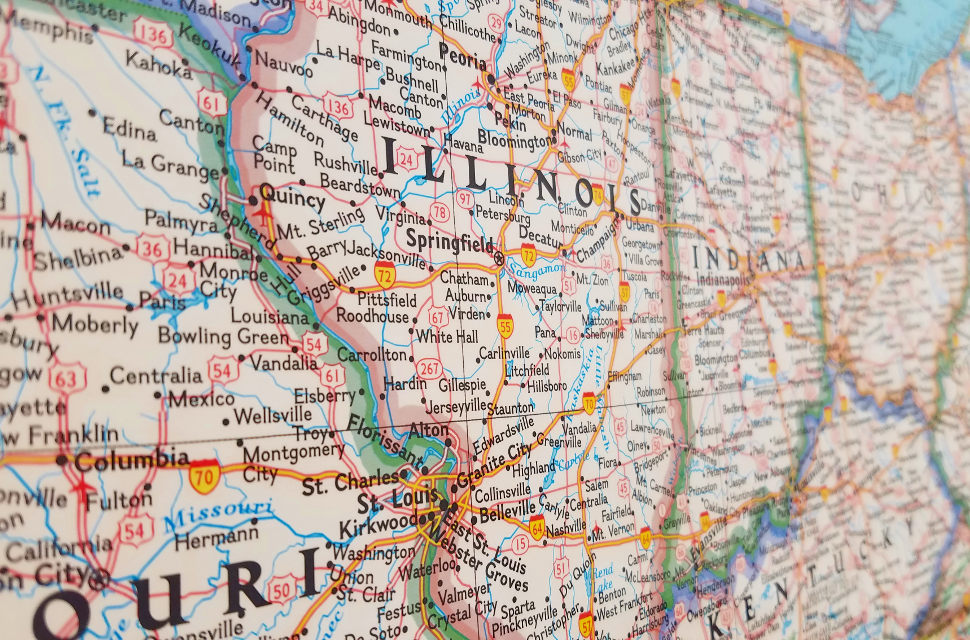Highest to Lowest Share of Blue Collar Jobs By State
Last November, Donald Trump was elected President of the United States thanks largely to overwhelming support from working-class white voters. This has engendered a discussion about the decline of blue collar jobs in the Midwest specifically and throughout the country more broadly.
Last November, Donald Trump was elected President of the United States thanks largely to overwhelming support from working-class white voters. This has engendered a discussion about the decline of blue collar jobs in the Midwest specifically and throughout the country more broadly.
This post looks at blue collar jobs as a share of total nonfarm employment in each state. We define “blue collar jobs” as jobs that are in goods-producing sectors – manufacturing, construction, mining, and logging. In 2016, 13.7 percent of the nation’s jobs fit this description. Approximately 8.6 percent of the country’s workforce was employed in manufacturing; 4.7 percent was employed in construction; and 0.5 percent was employed in mining & logging.
However, there is significant variation in blue collar employment by state, mostly due to differences in the share of employment in manufacturing. The state with the highest proportion of blue collar jobs is Indiana, where 21.4 percent of the workforce is employed in goods-producing industries. Indiana leads the country in manufacturing employment (17.0 percent of all jobs in the state) but has below-average employment in construction, mining, and logging. The next four states are Wisconsin (19.9 percent), Iowa 18.9 percent, Alabama (17.9 percent) and Michigan (17.6 Percent). By contrast, Hawaii has just 8.0 percent of its workforce employed in blue collar jobs, and 2.2 percent in manufacturing.
The table below ranks all 50 states from highest to lowest blue-collar jobs share in 2016.
|
Blue Collar Jobs |
Manufacturing |
Construction |
Mining & Logging |
|
|---|---|---|---|---|
| Indiana |
21.4% |
17.0% |
4.2% |
0.2% |
| Wisconsin |
19.9% |
15.9% |
3.8% |
0.1% |
| Iowa |
18.9% |
13.6% |
5.1% |
0.1% |
| Alabama |
17.9% |
13.2% |
4.3% |
0.5% |
| Michigan |
17.6% |
13.9% |
3.6% |
0.2% |
| Kentucky |
17.6% |
13.0% |
4.0% |
0.5% |
| Wyoming |
17.5% |
3.3% |
7.5% |
6.7% |
| Arkansas |
17.2% |
12.6% |
4.1% |
0.5% |
| Mississippi |
16.9% |
12.5% |
3.9% |
0.6% |
| North Dakota |
16.6% |
5.7% |
7.4% |
3.5% |
| Ohio |
16.5% |
12.5% |
3.8% |
0.2% |
| South Carolina |
16.4% |
11.6% |
4.6% |
0.2% |
| Kansas |
16.2% |
11.4% |
4.3% |
0.5% |
| Louisiana |
16.0% |
6.9% |
7.1% |
1.9% |
| Utah |
15.8% |
8.8% |
6.4% |
0.6% |
| Idaho |
15.8% |
9.3% |
6.0% |
0.5% |
| Oregon |
15.6% |
10.2% |
4.9% |
0.4% |
| Tennessee |
15.6% |
11.6% |
3.9% |
0.1% |
| North Carolina |
15.5% |
10.7% |
4.6% |
0.1% |
| South Dakota |
15.2% |
9.7% |
5.3% |
0.2% |
| Minnesota |
15.2% |
11.0% |
4.0% |
0.2% |
| Oklahoma |
15.1% |
7.8% |
4.7% |
2.7% |
| Washington |
14.9% |
8.9% |
5.7% |
0.2% |
| Texas |
14.7% |
7.0% |
5.8% |
1.8% |
| Vermont |
14.7% |
9.5% |
4.9% |
0.3% |
| Nebraska |
14.6% |
9.5% |
5.0% |
0.1% |
| New Hampshire |
14.2% |
10.2% |
3.8% |
0.1% |
| Pennsylvania |
14.0% |
9.5% |
4.1% |
0.4% |
| Missouri |
13.6% |
9.2% |
4.2% |
0.1% |
| Alaska |
13.3% |
4.0% |
4.9% |
4.4% |
| Illinois |
13.3% |
9.5% |
3.6% |
0.1% |
| Georgia |
13.1% |
8.9% |
4.0% |
0.2% |
| Maine |
13.0% |
8.2% |
4.4% |
0.4% |
| West Virginia |
13.0% |
6.2% |
4.0% |
2.7% |
| Connecticut |
12.9% |
9.3% |
3.5% |
0.0% |
| California |
12.8% |
7.9% |
4.7% |
0.1% |
| Colorado |
12.3% |
5.5% |
6.0% |
0.9% |
| Rhode Island |
12.0% |
8.2% |
3.7% |
0.0% |
| Montana |
11.5% |
4.2% |
5.8% |
1.5% |
| Arizona |
11.3% |
5.9% |
5.0% |
0.4% |
| Massachusetts |
11.0% |
6.9% |
4.1% |
0.0% |
| Virginia |
10.9% |
5.9% |
4.8% |
0.2% |
| New Mexico |
10.8% |
3.2% |
5.2% |
2.4% |
| Delaware |
10.3% |
5.7% |
4.6%* |
4.6%* |
| Nevada |
10.3% |
3.4% |
5.9% |
1.1% |
| Florida |
10.0% |
4.2% |
5.6% |
0.1% |
| Maryland |
9.8% |
3.8% |
5.9% |
0.0% |
| New Jersey |
9.7% |
5.9% |
3.8% |
0.0% |
| New York |
8.8% |
4.8% |
4.0% |
0.1% |
| Hawaii |
8.0% |
2.2% |
5.8%* |
5.8%* |
Source and notes: Authors’ calculations based on data from the Bureau of Labor Statistics.
*For Delaware and Hawaii, data are only available on the total number of jobs in “construction, mining, & logging,” without breakdowns amongst construction vs. mining & logging jobs.
It is also worth mentioning that the states that shifted from Obama to Trump rank near the top in the share of employment in blue collar jobs. In his campaign, President Trump promised to bring the jobs lost in these states. CEPR’s Blue Collar Jobs Tracker will monitor his success in this effort.
Alabama Blue collar worker Construction Donald Trump Employment Hawaii Indiana Iowa Logging Manufacturing Michigan Midwestern United States Mining Wisconsin

